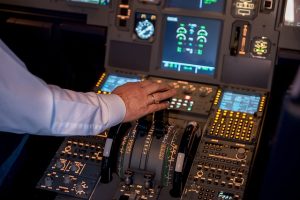
Modern airplanes are equipped with a variety of control mechanisms. Consisting of knobs, levers, dials, pedals and buttons, they allow pilots to control the airplane. In addition to primary flight controls, however, there are secondary flight controls. To learn more about secondary flight controls and how they work, keep reading.
Overview of Secondary Flight Controls
Secondary flight controls are control mechanisms used to regulate airflow over the airplane’s wings and other control surfaces. They give pilots more precise control over the airplane. Using secondary controls, pilots can fine-tune how the airplane flies and handles in different situations.
Types of Secondary Flight Controls
There are many different types of secondary flight controls. Elevator trim systems are a common type of secondary flight control. As the name suggests, they are used to control elevator trim. Elevator trim systems will reduce pressure on the airplane’s elevator so that flying becomes easier.
Tail trim systems are another common type of secondary flight control. Most airplanes have an adjustable-pitch tail plane, which is made possible with a tail trim system. Pilots can use the tail trim system to increase or decrease lift from the airplane’s tail plane.
Rudder and aileron trim systems are classified as secondary flight control systems. Rudder trim systems are designed to counter the thrust created by the airplane’s engine or engines, whereas aileron trim systems are designed to shift and balance the airplane’s center of gravity.
Many airplanes feature spoilers as well. Also known as lift dumpers, spoilers are devices that intentionally reduce lift. They are typically found on the upper surface of an airplane’s wings. Pilots can extend the spoilers to change the way in which air flows over the wings, thereby reducing lift.
Powered slats are a type of secondary flight control system. The leading edge of large airplanes often features slats. Wing slats may be automatic or powered, the latter of which are manually operated by pilots. Pilots can control powered wing slats using a secondary control mechanism.
Primary vs Secondary Flight Controls
Flight controls can be categorized as primary or secondary depending on their purpose. Primary flight controls are used to safely control the airplane during flight. Secondary flight controls, on the other hand, are used to fine-tune the airplane’s handling.
Common types of primary flight controls include control yokes, rudder pedals and thrust levers. Common types of secondary flight controls include elevator trim systems, tail trim systems, rudder and aileron trim systems, spoilers and powered slats.



